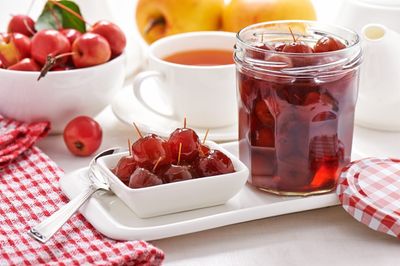Are Crabapples Edible?
The short answer to this question is: yes. However, there’s a longer answer to explain why. Crabapples aren’t actually a different kind of tree than apples. The only distinction is one of size. If a tree produces fruits that are bigger than 2 inches (5 cm.) in diameter, it’s an apple. If the fruits are smaller than 2 inches (5 cm.), it’s a crabapple. That’s it. Granted, those apples that have been bred to be bigger have also been bred to be better tasting. Many ornamental varieties of crabapples have been bred to have attractive flowers and nothing else. This means that the fruit of crabapple trees, for the most part, is not especially good tasting. Eating crabapples won’t make you sick, but you may not enjoy the experience.
Eating Fruit of Crabapple Trees
Some crabapple fruit trees are more palatable than others. Dolgo and Centennial are varieties that are sweet enough to eat right off the tree. For the most part, however, crabapple owners prefer to cook the fruit into preserves, butters, sauces, and pies. A couple good varieties for cooking are Chestnut and Whitney. Crabapple trees hybridize readily, so if you have a tree on your property, there’s a decent chance you’ll never know quite what it is. Feel free to experiment with eating it fresh and cooking it with lots of sugar to see if it tastes good. You don’t have to worry about whether it’s edible – it is. As for the cyanide? It’s just as present in the seeds of apples and even pears. Just avoid the seeds as usual and you’ll be fine.
